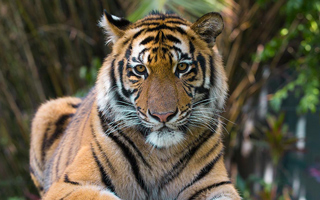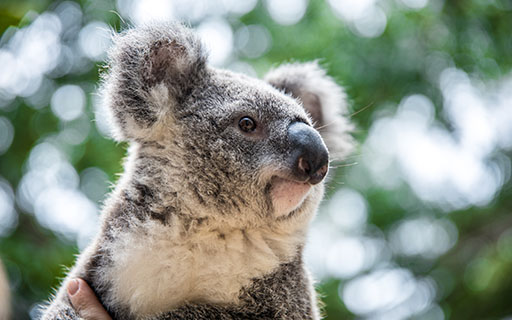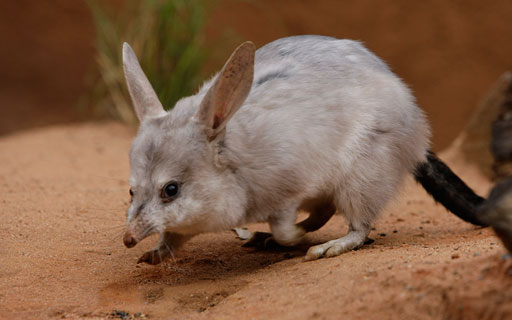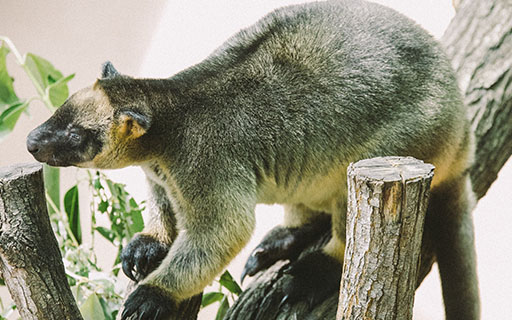KOALAS
Phascolarctos cinereus
| Size: | Animals from the southern part of the range are significantly larger than those from the northern part. | ||||
| Weight: |
|
||||
| Status: | Vulnerable (QLD, NSW, ACT) | ||||
| Description: | This short and stocky marsupial has a fine woolly fur, light to dark grey above with brown and white patches, and white to yellowish below. Northern animals fur is shorter. Males have a large sternal gland, which is used in the breeding season for scent marking: the male grasps a tree trunk and rubs its chest up and down against it. |
||||
| Habitat: | Koalas are found along the eastern coast of Q.L.D. & N.S.W. and throughout southern and central Victoria. There are small populations in southeastern S.A. and its islands. They inhabit eucalypt forest and woodlands and are limited to areas where there are acceptable food trees. |
||||
| Life Cycle: | Breeding is seasonal and occurs in summer and most mature females produce one young (rarely twins) each year. It weighs less than 0.5g at birth and remains in the pouch for 5-6 months, suckling on one of the 2 nipples. Weaning commences in the last months of pouch life. The infants change to a diet of leaves is initiated by it’s feeding on a soft faeces, which is called pap, apparently from the caecum of the mother. This is thought to inoculate the young with the microorganisms required for it’s own caecum to function. After leaving the pouch, a young koala feeds on a mixed diet of milk and leaves, and grows rapidly and travels clinging to its mother’s back. At the age of 12 months it is fully weaned and independent of its mother and by 18 months it has usually dispersed away from the area where it was born. Females become sexually mature at 2 years of age, males at 3-4 years. They live between 8 & 10 years in the wild and 10 to 14 years in captivity (females usually live longer than males). The oldest known koala is 22 years of age. |
||||
| Diet: | It feeds predominantly on the foliage of eucalypts. There are 600-700 different types of eucalypt species throughout Australia; the koala is known to eat at least 50-60 of these. Not all of these are eaten in different areas. They have to eat around 600g of leaves per day (that’s one shopping bag full). | ||||
| Facts: | Eucalypt leaves have a high fibre and a low protein content. They contain strong smelling oils, phenolic compounds and sometimes cyanide precursors, which make them unpalatable or even poisonous to most mammals. To cope with this diet, the koala has numerous adaptations, most notably an enlarged caecum, proportionally longer than in any other mammal, in which micro bial fermentation takes place. Oils and phenolic compounds are detoxified in the liver and leaves containing cyanide precursors are probably avoided. Koalas are not drunk: they sleep a lot because their food has little energy (only 5% sugars and starches). | ||||
| Did you know: | Eucalyptus leaves contain about 60% water so koalas rarely need to drink. Koalas can jump up to 2m between branches and sleep up to 18hrs a day The males mating and territorial calls sound like that of a pig. Koalas can swim Chlamydia is thought to be endemic in wild koala populations with symptoms only surfacing due to stress (usually caused by habitat loss). The two major symptoms are conjunctivitis (usually leads to blindness and starvation) and cystitis (and infection of the urinary tract that can cause female infertility). |
DWF SPECIES




